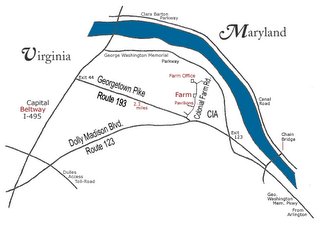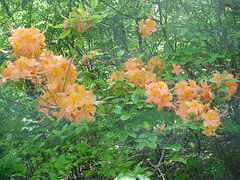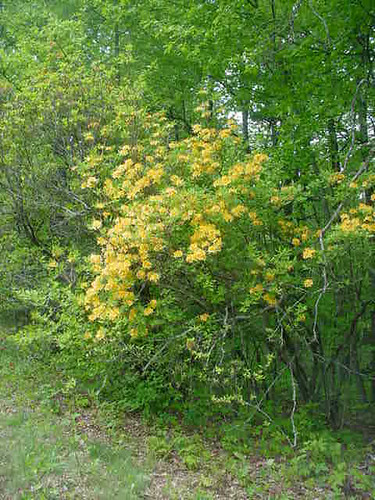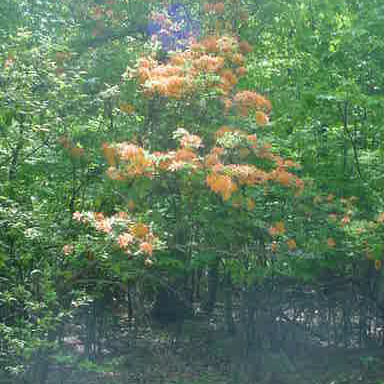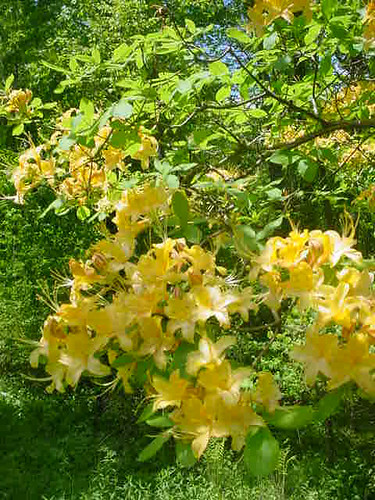Covered Bridges of Virginia’s Past and Present

Bob White covered bridge, Patrick County, Virginia; 80', 1920, closed to motor traffic.
In my lifetime, covered bridges have been seen largely as romantic structures of a more quixotic time. However, nowadays I believe by all but the oldest third of our population they are thought of only as historical landmarks, but what was the original purpose of covering bridges? Many reasons have been suggested over the years for why bridges were covered, and even though most were practical or romantic, not all of these ideas were correct from a truly practical stand point. One explanation was that "the spans were built to resemble barns so farm animals would feel more at home and not stampede as they were driven across the rushing waters." Other explanations included: to keep snow off the bridge, "to keep the oiled planks of the roadbed from becoming dangerously slippery in the rain," to cover up the unsightly trusses, to provide shelter to travelers caught in a storm, and to provide a place to court your lady and secretly give her a kiss.
Covered bridges did serve many of these purposes other than simply providing a way to cross a river. Weddings, political rallies, National Guard drills, religious meetings, a night’s sleep for tramps, town meetings, poker parties, election headquarters, sweethearts’ rendezvous, drunken revels, bond rallies, fights and dances, and rainy-day luncheons took place in covered bridges. They also served as good landmarks and advertisement billboards.
However, one real reason for covering bridges was to protect the trusses from the weather because the environment caused bridges to fail sooner. Bridge engineers pointed out that a housed timber truss span has a life expectancy at least three times greater than one un-housed. Another important consideration was that the housing provided a kind of insulation for the timber, shading it from the sun and maintaining it under more uniform temperature conditions.
Covered bridges can be dated back two thousand years to a time when they were being built in China and even earlier in ancient Babylon (780 B.C.). But the first covered bridge built in America was built in 1804 by Theodore Burr of Connecticut. This bridge spanned the Hudson River in New York and was called the Waterford Bridge, lasting for 105 years.
In Virginia, covered bridges began to dot the countryside nearly two centuries ago. Spanning rivers and streams, their number grew to the hundreds. However, relatively few of Virginia’s covered bridges survived into the early years of the 20th century. Here are a few:
Bob White Bridge
The Bob White Bridge in Patrick County is an 80-foot truss over the Smith River near Route 8 south of Woolwine. Built in 1921, it served principally as a connection between Route 8 and a church on the south side of the river. Although it has been replaced with a modern bridge, visitors can still walk up to the Bob White Bridge, which was retained for its landmark value.
It can be reached from Woolwine by traveling 1.5 miles south on Route 8, east one mile on Route 618 to Route 869, then south one-tenth of a mile.
Jack's Creek Bridge
Jack's Creek Bridge crosses the Smith River in Patrick County on Route 615 just west of Route 8 about two miles south of Woolwine. The 48-foot span, built in 1914, has been replaced by a modern bridge but is being retained in the county.
It can be seen from Route 8 at its intersection with Route 615, or it can be reached by turning west two-tenths of a mile on Route 615.
Humpback Bridge
In terms of seniority, the venerable Humpback Bridge lays claim to being the oldest of Virginia's remaining covered bridges. Located in Alleghany County, just west of Covington, it was built in 1857. It was part of the James River & Kanawha Turnpike (JR&KT) and it succeeds three other bridges at the site. It stretches over Dunlap Creek, which is a tributary of the Jackson River that joins the Cowpasture River, near Iron Gate to form the James River. The first structure was built in the 1820s and was washed away by a flood on May 12, 1837. The second fell victim to the flood of July 13, 1842 and the third, as the annual report of the JR&KT company put it, "gave way" in 1856.
The 100-foot-long, single-span structure is four feet higher at its center than it is at either end, thus the name, "Humpback". Traffic across the bridge ceased in 1929 when it was replaced with a "modern" steel truss bridge. It stood derelict (and was even used by a nearby farmer to store hay) until 1954. That year, thanks to the fund-raising efforts of the Business and Professional Women's Club of Covington and the Covington Chamber of Commerce, it was restored and preserved as part of Alleghany County's history.
It can be reached from I-64 by taking exit 10 to Route 60 and traveling one-half mile east, or by taking Route 60 west from Covington.
Sinking Creek Bridge
In Giles County north of Route 460 are two circa 1916, modified Howe trusses built over Sinking Creek.
Sinking Creek Bridge (also known as Clover Hollow Bridge), a 70-foot span currently maintained by Giles County, was left in place for the property owner when a new bridge was built in 1949. It is located just off Route 601 between Route 42 and Route 700. A 55-foot span, known as Link's Farm (Bradley) Bridge, stands on private property nearby.
Also in Giles County is the C.K. Reynolds Covered Bridge, which still remains on private property. The Biedler Farm Bridge in Rockingham County, also remains on private property.
Meem's Bottom Bridge
One of the best-known covered bridges is the 204-foot single-span Burr arch truss known as Meem's Bottom in Shenandoah County. Here it is possible to step back into the past, while less than a half-mile away the hum of modern-day traffic can be heard on I-81.
The site takes its name from the Meem family that owned large landholdings in the area. This long span over the North Fork of the river carried traffic for more than 80 years before being burned by vandals on Halloween 1976.
After salvaging the original timbers, the bridge was reconstructed and eventually undergirded with steel beams and concrete piers.
Succeeding several earlier bridges, the Meem's Bottom Bridge was built in 1894 from materials cut and quarried nearby for the massive arch supports and stone abutments, which extended 10 feet below the riverbed. Records show that previous bridges were washed away in the floods of 1870 and 1877. The next bridge, built in 1878, stood until replaced by the present bridge.
The bridge is reached easily from I-81 at exit 269 between New Market and Mount Jackson, following Route 730 from the interchange four-tenths of a mile to Route 11, then north on Route 11 nine-tenths of a mile to Route 720 and west a short distance to the river. It also can be reached on Route 11 four miles north of New Market and about two miles south of Mount Jackson.
Today in Virginia, only eight covered bridges are known to still stand. Five have been preserved as landmarks and three are on private property.
C.K. Reynolds Covered Bridge, Giles County.
Biedler Farm Bridge, Rockingham County.
Links Farm Bridge, Giles County.
For more information on Virginia’s covered bridges click here.
Images: from, Virginia Department of Transportation
Technorati Tags: [Blue Ridge] [Covered Bridges] [Virginia] [Theodore Burr] [America]























